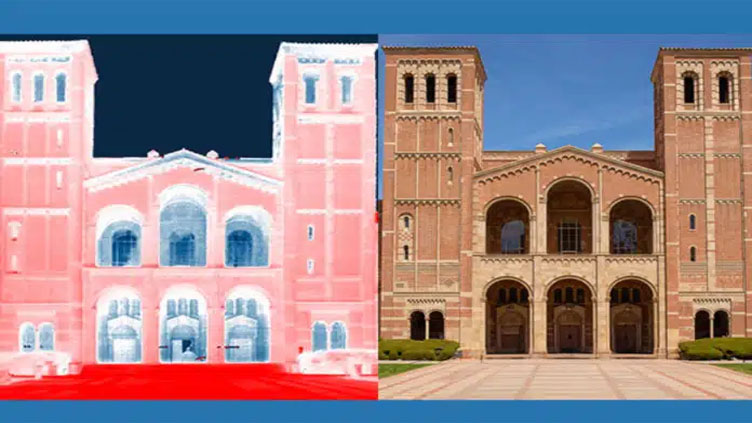Researchers develop innovative material for buildings to beat rising temperatures

Technology
White paint keeps buildings cooler in summer and warmer in winter.
(Web Desk) - As global temperatures climb, the need for sustainable cooling technologies is growing. Researchers at UCLA, in collaboration with their partners, have introduced a new, cost-effective method for regulating building temperatures year-round.
A study led by Aaswath Raman, an associate professor at the UCLA Samueli School of Engineering, and published in Cell Reports Physical Science, details a breakthrough approach in managing radiant heat through standard building materials.
This method aims to improve thermal control by utilising the infrared spectrum for more efficient temperature regulation.
Radiant heat, which transfers through electromagnetic waves from warm surfaces, complicates temperature management in buildings.
Traditionally, cooling buildings with minimal sky exposure has been challenging as they absorb heat from their surroundings. Conversely, these buildings also struggle to retain heat during colder months.
Raman points out that historic practices in cities like Santorini and Jodhpur involved reflecting sunlight to cool buildings. Recent advancements have focused on cool roof coatings, but managing heat through walls and windows presents a more intricate problem.
The UCLA team has developed materials that mimic the cooling effects of super white paint. These new materials, when applied to walls and windows, effectively manage heat flow, keeping buildings cooler in summer and warmer in winter.
This innovative approach offers a promising path to energy efficiency and improved comfort.
Using everyday materials like polypropylene, sourced from common plastics, the researchers demonstrated that these substances can effectively radiate or absorb heat within the atmospheric transmission window.
This scalability could lead to widespread adoption of these materials for building temperature regulation.
The new method is entirely passive, meaning it does not require active heating or cooling systems. This could result in significant energy savings and reduced carbon emissions.
Jyotirmoy Mandal, the study’s first author, emphasises that this approach offers a sustainable solution with potential benefits for low-income communities lacking advanced heating and cooling infrastructure.
The research team is now focused on testing the method on larger buildings and assessing its real-world energy savings, particularly in heat-prone areas of Southern California.


